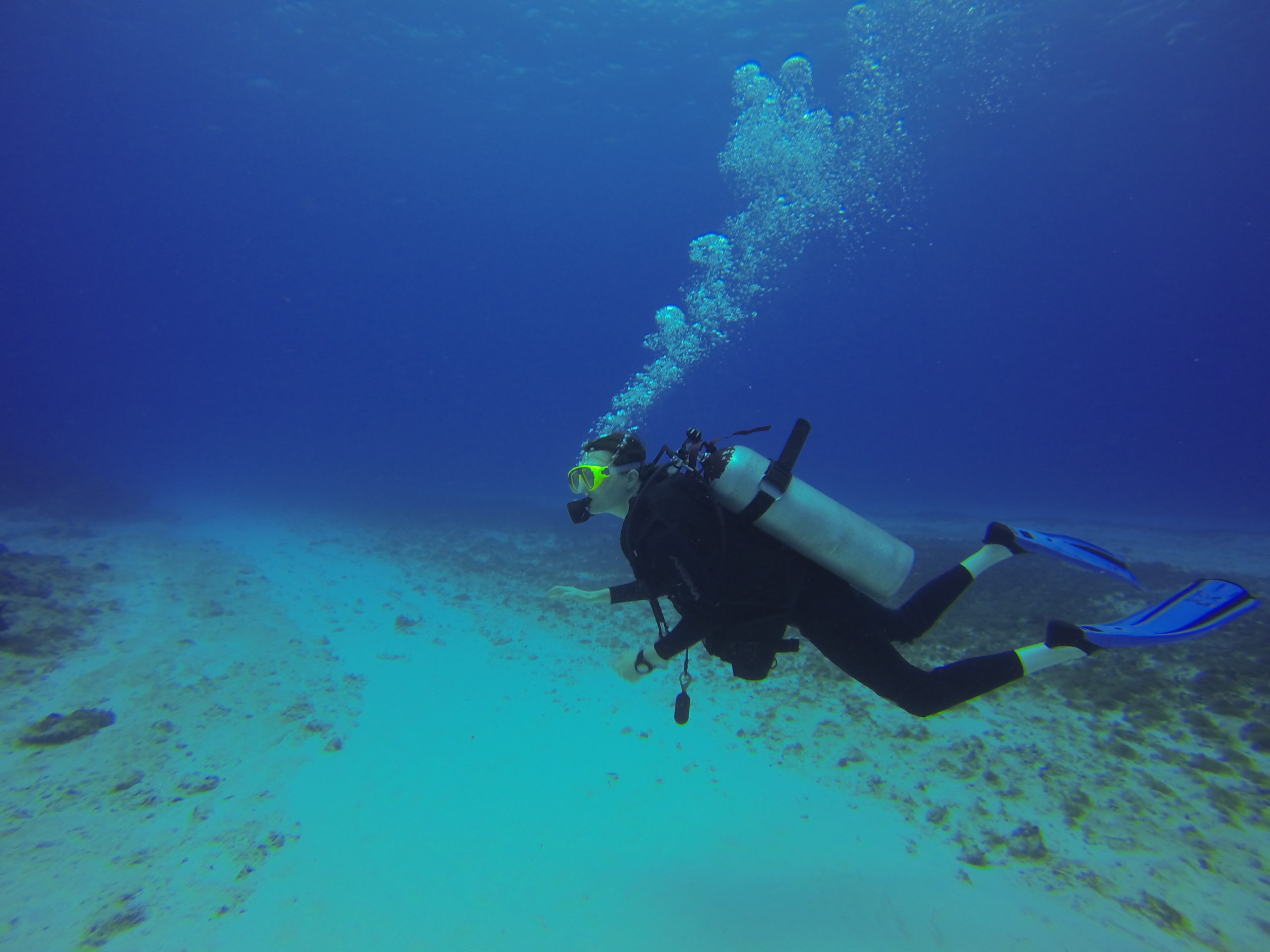
As part of CORAL’s development team, I don’t get many opportunities to go into the field. But last month, I joined Field Programs Director Jason Vasques on a trip to Playa del Carmen, Mexico, for a series of meetings relating to our work with the Mesoamerican Reef Tourism Initiative (MARTI).
Now, not only are trips into the field a little rarer for us development folk, but I didn’t join CORAL with much of a conservation or marine biology background. When I joined CORAL in the summer of 2009, my only interaction with a reef was snorkeling in Bermuda when I was seven. Had I not taken this job, I am not sure I would have ever pursued SCUBA certification. Having said that, when in Rome . . .
In the winter of 2011, when my first work trip to our project site in Mexico was approaching, I gave more serious thought to the idea of getting certified. Not wanting to miss out on an opportunity to see firsthand what it is that I spend my days fundraising for, I signed up for a four-day open water certification course with a local Bay Area dive shop.
Fast forward three years later, and as I am on the boat heading out to our dive site in Cozumel, I am reminded of a conversation we have had many times back at HQ: the topic of shifting baselines.
As a novice diver, it isn’t uncommon for people like me to jump in the water and be amazed by the beauty and tranquility of a coral reef. The marine life and complex structures are breathtaking to see up close. With only a handful of dives under my belt, I am like a child visiting Willy Wonka and the Chocolate Factory: “this is in-cred-i-ble,” I think to myself. Had I gone diving 30 years ago (an impossibility given my age, but stick with me here) and then gone again today, my reaction might be more despairing and sad. Of course, having worked with CORAL for five years, I know intellectually that these reefs I am seeing are not as healthy as they could or should be—but they are still a wonder to me. Back on the boat, I ask Jason what the coral cover is; his response is a solemn, “Oh, this particular dive site…barely 6-10%.”
Without the knowledge I have gained during my tenure at CORAL, I might have gone through that dive thinking this is what a coral reef looks like, without giving much thought to what a reef could and should represent. This is a shifting baseline at work. My reference point is different to those who explored those Cozumel reefs back in the 80s and 90s. But does that mean I shouldn’t be concerned? Not at all. Is the situation dire? Yes. Is it impossible to beat? Absolutely not.
I am inspired by stories of reefs in recovery or report cards that show improvements in reef health. I am inspired by that 6-10% of coral cover fighting for the chance to survive—and thrive. And I am inspired by the dozens of people I have had the privilege to meet who are working tirelessly to leverage tourism to protect our planet’s precious coral reefs.
What about you? What are you most inspired by and hopeful for when it comes to the future of reefs?
